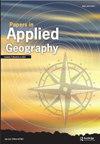Temperature Microclimate Near a Tropical Rainforest Waterfall
Q2 Social Sciences
引用次数: 0
Abstract
Abstract The temperature microclimate of a tropical rainforest waterfall was evaluated over a six-day period in February 2020. Observations at the waterfall were compared to a weather station located in a small rainforest clearing at a research center more than 1 km away. Results found that the research center weather station was significantly warmer than all five waterfall sensors for all observations supporting previous research findings of warmer temperatures at forest clearing sites compared to forest with intact canopy. There were additional significant differences among sensors surrounding the waterfall, with results showing that sensors closer to the waterfall were the coldest. Because diurnal heating was believed to be the primary contributor to the significant results, tests were run for only the nocturnal hours to evaluate the robustness of the results. The research center weather station was still significantly warmer than all of the waterfall sensors for nocturnal hours with distance away from the waterfall again being the primary reason why there were significant differences between the waterfall sensors. It is hypothesized that modest evaporational cooling in a high-humidity environment due to downsloping winds at night is responsible for several low temperature outliers at four of the waterfall sensors.热带雨林瀑布附近的温度小气候
在2020年2月对热带雨林瀑布的温度小气候进行了为期6天的评估。研究人员将瀑布上的观测结果与位于1公里外一个研究中心的小型雨林空地上的气象站进行了比较。结果发现,研究中心气象站的所有观测结果都明显高于所有五个瀑布传感器,这些观测结果支持了先前的研究结果,即森林采伐点的温度高于完整冠层的森林。在瀑布周围的传感器之间还有其他显著差异,结果表明靠近瀑布的传感器最冷。由于白天的供暖被认为是产生重要结果的主要因素,因此仅在夜间进行测试,以评估结果的稳健性。研究中心气象站在夜间的温度仍然明显高于所有的瀑布传感器,距离瀑布的距离再次成为瀑布传感器之间存在显著差异的主要原因。据推测,由于夜间的下坡风,在高湿环境中适度的蒸发冷却是造成四个瀑布传感器几个低温异常值的原因。
本文章由计算机程序翻译,如有差异,请以英文原文为准。
求助全文
约1分钟内获得全文
求助全文

 求助内容:
求助内容: 应助结果提醒方式:
应助结果提醒方式:


